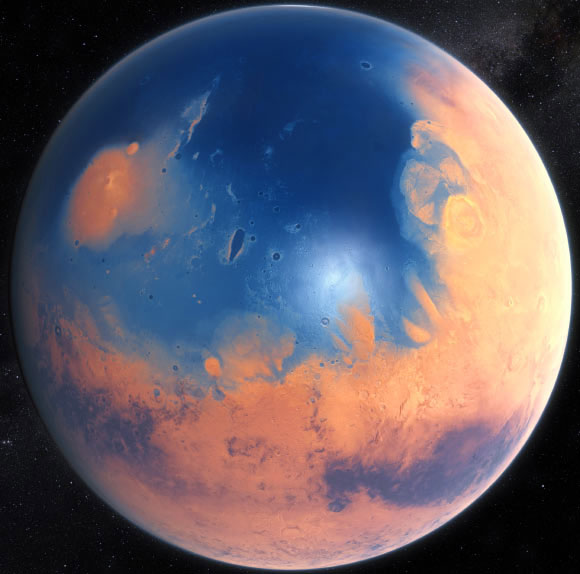Recent research led by Dr. Boris Sauterey from the School of Ecology and Evolutionary Biology at the University of Arizona, USA, and the Ecole Normale Supérieure’s Institute of Biology, a part of the Paris Sciences et Lettres University, has revealed compelling evidence indicating the existence of ancient and unique organisms beneath Mars’ surface.

According to Sci-News, their groundbreaking study suggests that Mars supported life around 3.7 billion years ago, during its early stages. However, unlike life forms on Earth, these Martian organisms didn’t inhabit the planet’s surface; instead, they flourished in the subsurface layers.

The researchers put forward an intriguing hypothesis: the presence of Martian life forms sustained within a distinctive environment beneath the planet’s regolith. This environment, rich in saltwater, could offer protection from harmful UV radiation and cosmic rays while serving as a solvent. Furthermore, the subterranean temperatures, diffusion gradients, and reduced atmospheric pressure might have facilitated microbial life capable of metabolizing hydrogen and carbon dioxide to generate energy, thereby emitting methane as a byproduct.

While analogous processes have been observed on Earth, where extremophiles derive sustenance from diverse sources, this study represents the first comprehensive examination of such conditions in a Martian context.
The concept of primitive life forms consuming hydrogen and emitting methane hearkens back to Earth’s early epochs, though such organisms would prove toxic to modern terrestrial life forms, including humans, owing to the excessive methane emissions.
By modeling the interaction between these ancient life forms and Mars’ environment, the researchers suggest that a crucial factor for their survival would be an ice-free surface capable of supporting biomass akin to Earth’s primordial oceans. Previous studies, including those by NASA, have indicated the likelihood of such conditions on early Mars.
Regions like Hellas Planitia, Isidis Planitia, and Jezero Crater are identified as potential hotspots for these life forms, also representing prime targets for future space missions aimed at excavating fossils of ancient Martian organisms.
The biomass on ancient Mars and Earth 3.7 billion years ago may have been comparable. However, the interplay of this ancient Martian ecosystem with the planet’s conditions could have resulted in a global cooling of approximately minus 223 degrees Celsius, hindering the evolution of more advanced life forms.
This finding could serve as a definitive resolution to the question of other potential life forms, rendering Mars the desolate planet it appears to be today.
The discovery of evidence indicating ancient life beneath Mars’ surface heralds a new era in our comprehension of the cosmos. It not only illuminates the prospect of extraterrestrial life but also underscores the resilience and adaptability of life forms in extreme environments. As humanity continues to probe the mysteries of the universe, Mars remains an alluring frontier, offering glimpses into our own origins and the potential diversity of life beyond Earth.




